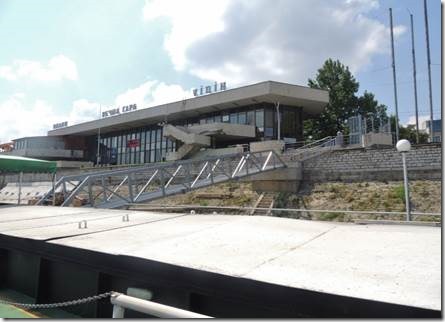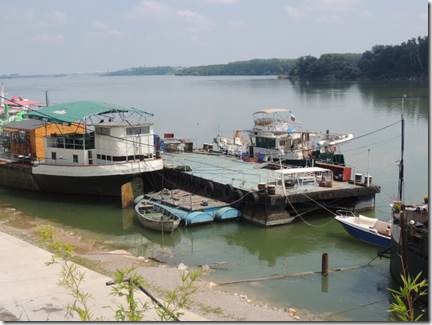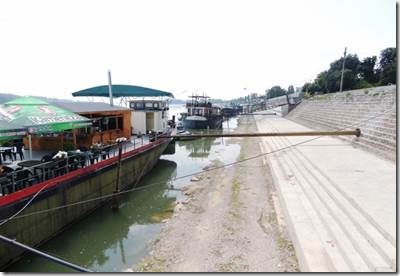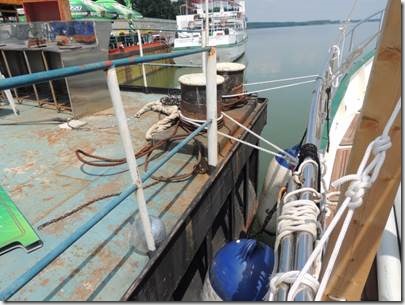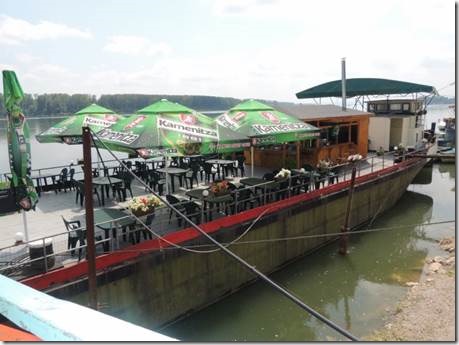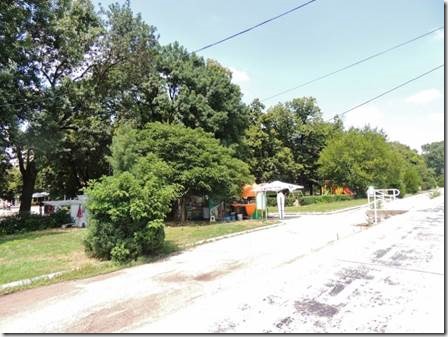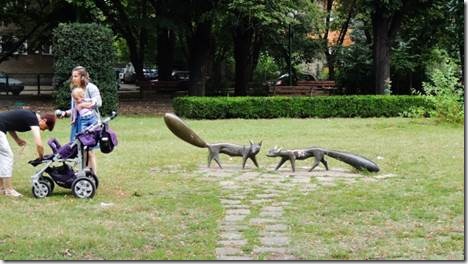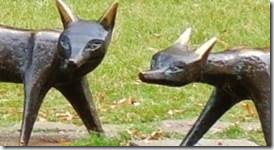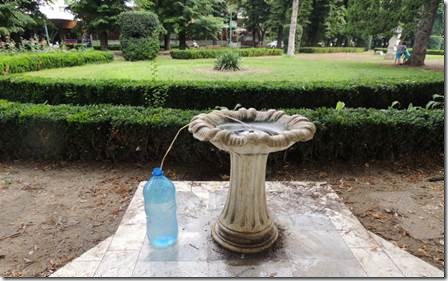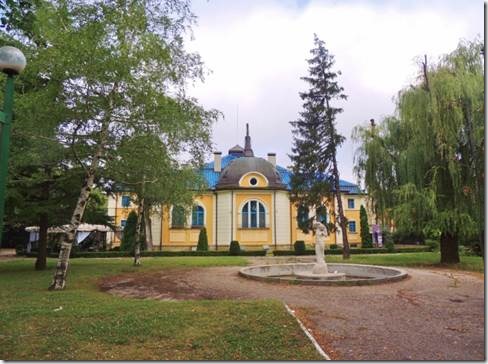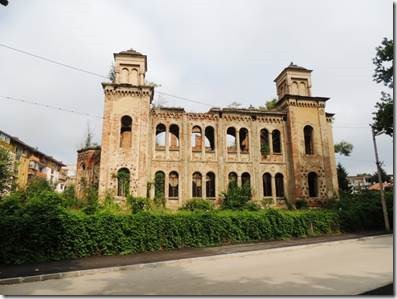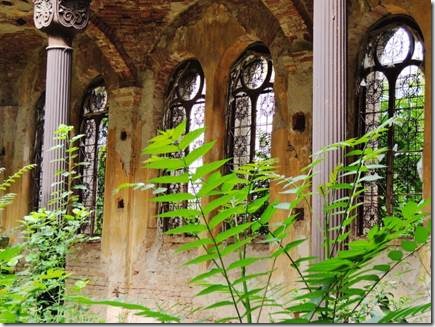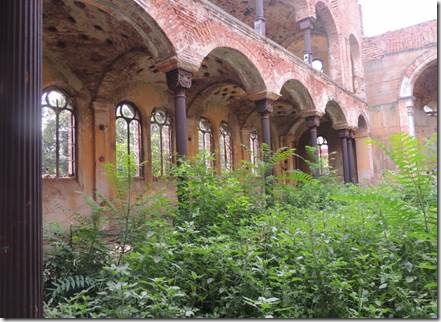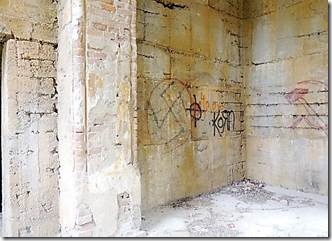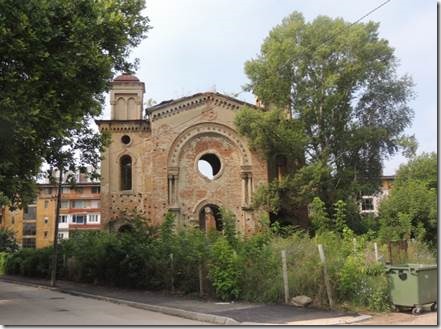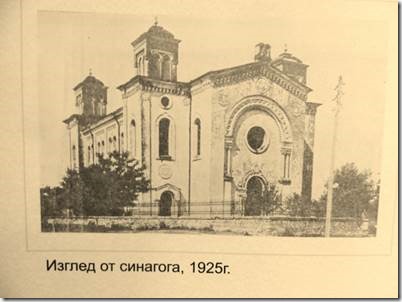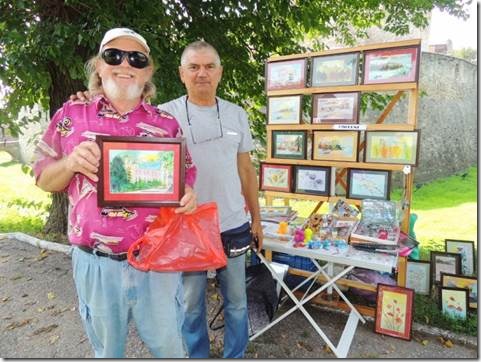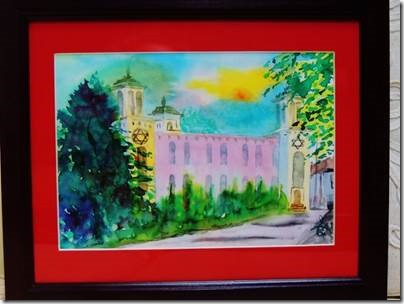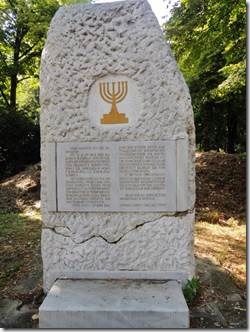Braila, Romania
Salut = hello in Romanian
We checked out of Bulgaria and into Romania yesterday, both longer processes than elsewhere along the way. No problem, just longer waiting while everyone who needed to authorize our exit and entrance – authorized, signed and stamped everything that had to be authorized signed and stamped. Rick and Randal went off to get this all done and Mary and I stayed on the boat where it felt like an even longer process. That always happens when you are just waiting. Last night we stayed overnight in Hirsova after a long 124 kilometer day which included the check in and check out stops. Tonight we’re in Braila. In this email I’m back in Vidin, one of my favorite stops in smaller places.
I have to say that moving along fairly rapidly has made my head spin about. That’s partially due to my wanting to understand and then pass along enough past and current history to understand why life is as it is in Eastern Europe. Some of these Vidin emails contain lots of text along with the photos. I thought it was all interesting.
Ru
Vidin Bulgaria
Poor but not downtrodden is how I would look at Vidin. Downtrodden were the people in the Philippines we saw. The Bulgarians seem upbeat. The women dress up. People are out and about. But the library and art museum all need a huge infusion of municipal money.
Meeting Emilia and the young women from Sofia University “Saint Kliment Ohridski” was a real treat. A high school student we met while out in the city was quite self-possessed as he told us about his summer internship working with computers. He too was quite positive about America. People in general seemed friendly.
I want to tell those who could to invest in Serbia and Bulgaria, because for many historic and recent global economy reasons the area is an economic mess. Hopefully the economy will improve; you just have to root for the people.
|
Checking into Bulgaria in Vidin |
|
Tied up to a restaurant barge. We had power and water. To get water we had to attach our hose to the faucet in the restaurant kitchen. Even turned on full force it took a good while to fill our boat. But they were very accommodating about it. Rick had to figure out how to get it all attached and I had to hunt around under our settee for the bag of clamps Randal said were there. I found the clamps and Rick rigged the hose up to the faucet and it all worked. Lines and steel beams held the barge in place. |
|
We had to climb off DoraMac onto the barge and walk through the “outdoor” cafe to get to the street. The owner of this barge also was a partner in the restaurant barge just down river from us. |
|
A park promenade ran along the waterfront. |
|
Some enchanted foxes in the park. You can see where their ears have been rubbed: I know I rubbed them. |
|
An even slower way to get water; but clever. Several straws were jammed together extending from the fountain to the empty bottle. You can safely drink from all of the fountains in Eastern Europe and Turkey too. |
|
Not sure what this building is but we passed it on our way to the Synagogue which was on our way to Baba Vida Fortress. |
|
The Synagogue The second biggest synagogue in Bulgaria and once considered the most beautiful. Now it’s derelict. Emilia said many Vidin residents are ashamed of its condition. But there’s no money for the library or schools which I think need to come first if there’s ever to be enough money for the extras such as the synagogue or art gallery. Rather than try to rebuild it I think they should clean out all the debris and anything dangerous and just turn it into a restful green area like they did in London with Saint Dunstan in the East. “Built in 1894 in the neo-Gothic style Vidin was Bulgaria’s second largest synagogue, a testament to the wealth and pride of the local community that had flourished for more than five centuries after its arrival from Spain in the fifteenth century. The synagogue contained a narthex, prayer hall. And lofts all of which were decorated with a combination of classic architectural forms and ancient Jewish decorative symbols, illuminated by stained-glass windows. Today, the Vidin Synagogue with its four towers stands as a ruin, roofless and forlorn. Seized by the communist government in the wake of WWII, the synagogue was subsequently appropriated by the state. During the 1970s the Ministry of Culture and the National Institute of Monuments developed a plan to restore the building. Work began in 1983 and continued until 1989, when the collapse of the communist regime lead to the abandonment of the project, just as workers had removed the roof. Exposed to the elements for more than a decade the synagogue is now a ruin. Complete photo documentation of the synagogue and its interiors took place prior to the restoration attempt and could be used as the basis for a new restoration program. The Bulgarian national Jewish organization, now the owner of the site, wishes to see the building restored as a concert hall for use by the community, and also as a monument to its forebears. Last update: 2004” http://www.wmf.org/project/vidin-synagogue A Ministry Letter Slowing Down Restoration of the Vidin Synagogue Author: Tsvetomir Tsvetanov, Lilia Dimitrova, Plamen Kotsev Source: BNR, Radio Vidin, 07.03.2013 That could be framed and saved with some kind of historical explanation. Part of the barbed wire fence had been pushed open so we crawled through. There was somewhat of a beaten path but it was mostly overgrown waist-high brush. |
|
Photo in the small museum in the Fortress shows it had once been surrounded by a low stone wall. This is the first street artist I have found who had painted an image of the local synagogue. The street artist in Budapest we saw had none of the Great Synagogue and most tourist offices had nothing. Interestingly Slovakia, Serbia and Bulgaria seemed more proud of their synagogues and had information in the tourist offices. A memento of the synagogue that one day might not be there |
|
Monument, raised by the Jewish community of town Vidin, Bulgaria It’s in Bulgarian so I’ve only been able to find bits about it but the nuber 49,000 is engraved in the text. That’s about the number of Jews who were sved by the Bulgaria during WW 2. May 14, 2002 Salvation of the Bulgarian Jews during the last world war Beatriz Rosanes de Samuilov http://www.raoulwallenberg.net/saviors/others/salvation-bulgarian-jews/ |

